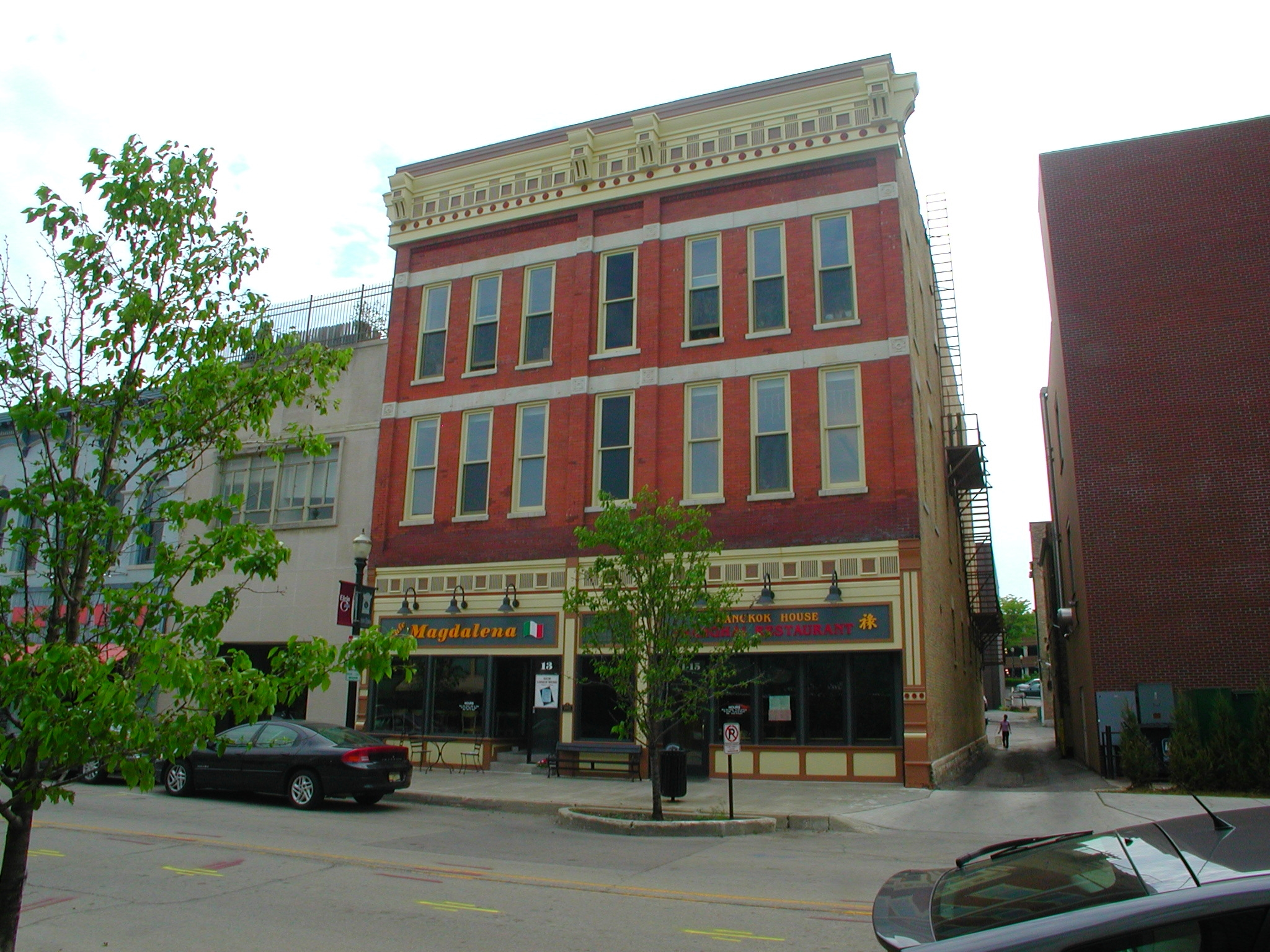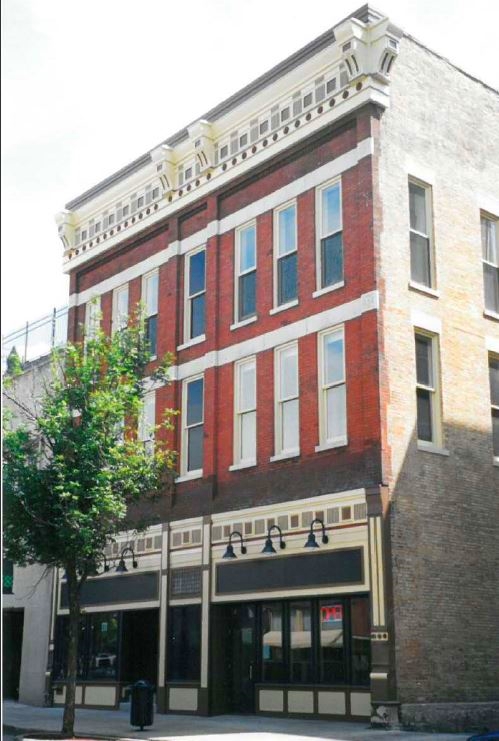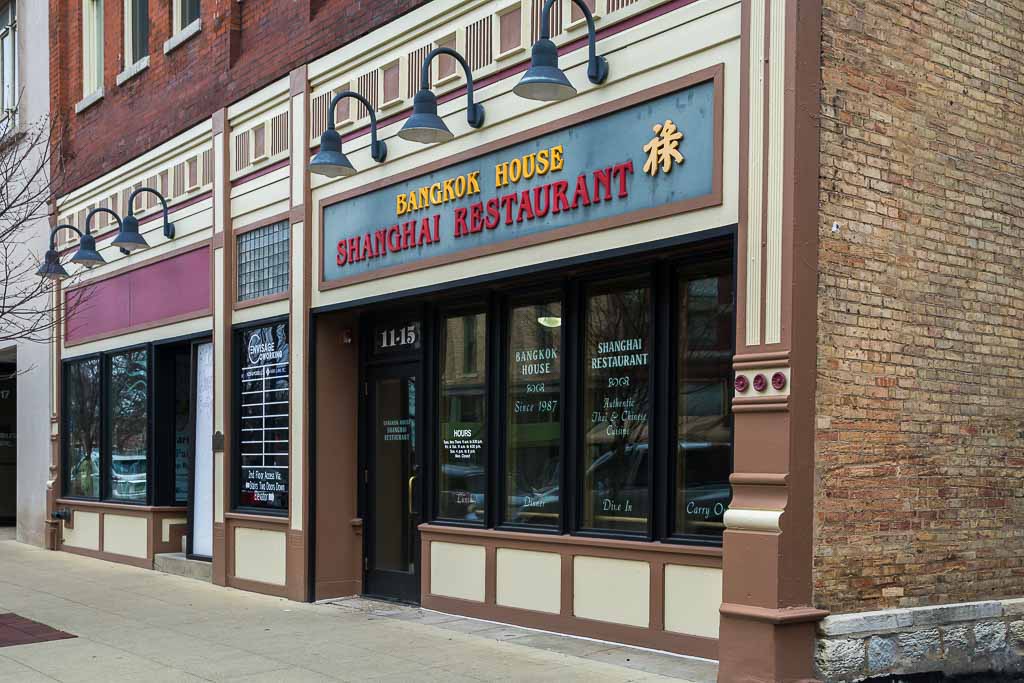11-15 DOUGLAS AVENUE
HISTORIC SIGNIFICANCE
The property was once owned by Adolph Sass in 1858. He held onto the property until selling the lot next to the alley to Charles Kohn and the piece next to it to Conrad Schramm. In April, 1883, the Elgin Advocate reported that Theodore Kohn, Charles Kohn, and M.A. Schramm had petitioned the Elgin City Council to build a three-story brick building on Douglas Avenue. It was to be 44 feet long (wide) and used for stores, offices, and a hall.
One mystery associated with this site is that in May of 1883, during the excavation for the building, a package of coins dating from between 1820 and 1830 was found! There is no report on what became of those coins, nor any theories as to how they got there.
13 Douglas was used as a butcher shop by Charles and Theordore Kohn for only a few years when the space was then occupied by the Nordstrom Drug Store, its first tenant. However, 13 Douglas quickly turned over to the Stone Brothers who continued in the same business. By 1900, 13 Douglas Avenue had become a drinking establishment operated by S.J. Noble. Later on, other businesses occupied the store.
At 15 Douglas, the Schramm brothers, John and George, operated a confectionery and ice cream parlor, which had a savory history!
Louis Blum, a native of Germany, came to Elgin in 1888 and began working for the Schramm brothers. Blum purchased the business outright in 1896, his sole flavor of ice cream was vanilla. However, by 1926, he had a dozen flavors on his menu! In the early days before refrigeration, the ice cream was made in a hand-turned freezer. Production would discontinue in late October until spring, except during the Christmas season.
15 Douglas Avenue remained as an ice cream parlor until 1934, when Blum hired a cook and the business expanded into a restaurant. Some of the favorite desserts noted included tortoni bisque, pineapple glaze, amber pudding and caramel pecan. The second floor was used for Blum's candy making operation where he offered more than one hundred varieties of sweets. The third floor was used by the Modern Woodmen, Knights of Pythias, and the Royal Arcanum, among many others, for meetings and social activities; later by the American Legion. Having owned the business for over 40 years, Louis Blum acquired the building from the Schramms in 1937. Blum's son, Edmund, continued the business until 1964 when he decided to close the business for good.
ARCHITECTURAL SIGNIFICANCE
11-15 Douglas Avenue is displayed in the commercial Italianate style. The front facade of the building is red brick, original on the upper two floors. A band of bricks projecting out from the wall surface outlines the second and third levels. The upper two floors are divided horizontally by light colored concrete containing decorative detail. The cornice contains visually, heavy brackets (faithful replicas of the originals) spaced by poly-chromatic dentils. The windows, most of them original, are one over one, double-hung, wood windows. At the street level, the two store fronts have been restored with a central access door (with a transom containing prism glass) that leads up to the upper levels.
Sources: 2001 Heritage Plaque Application; Audio: TextAloud





